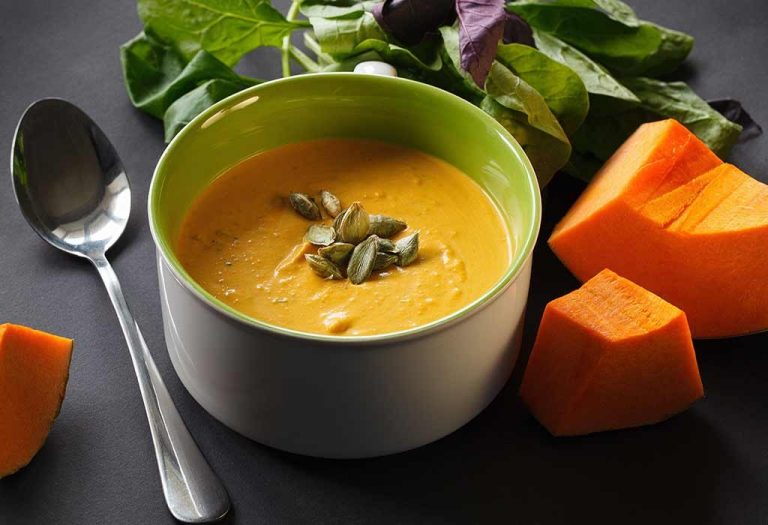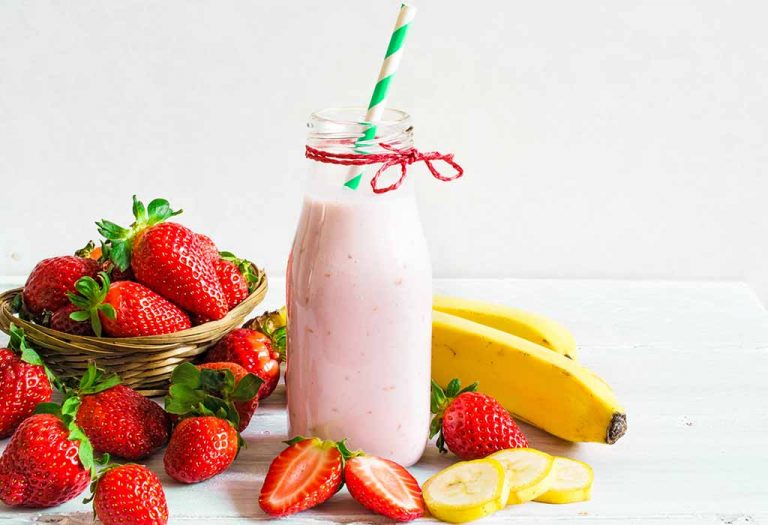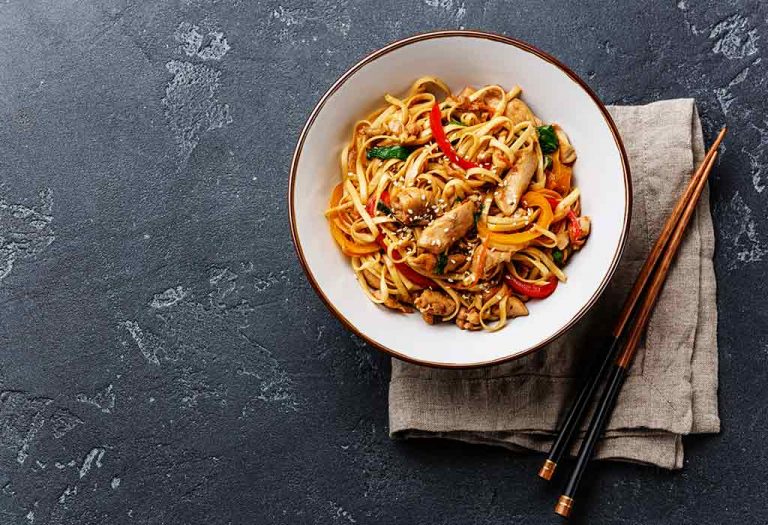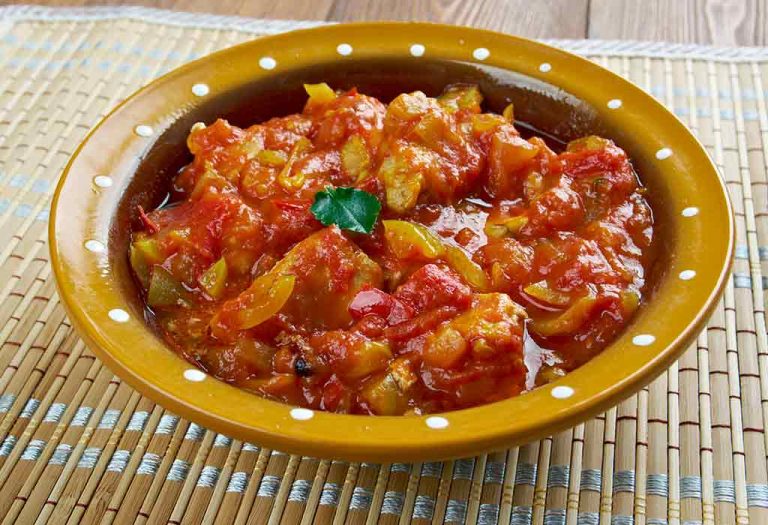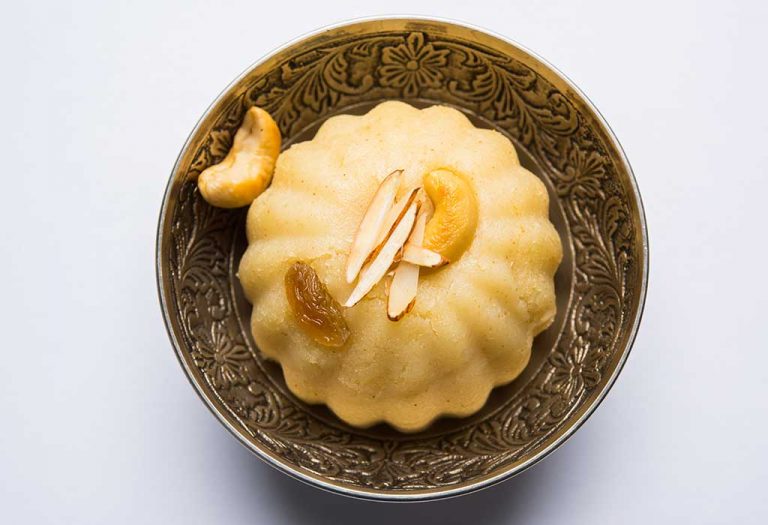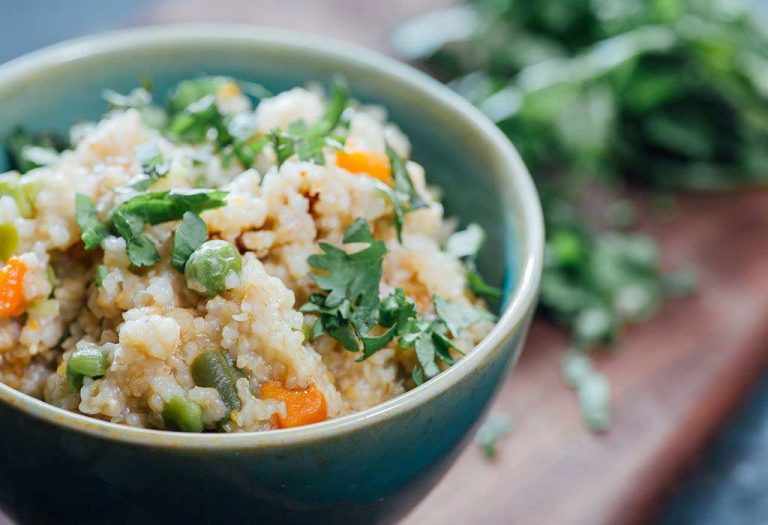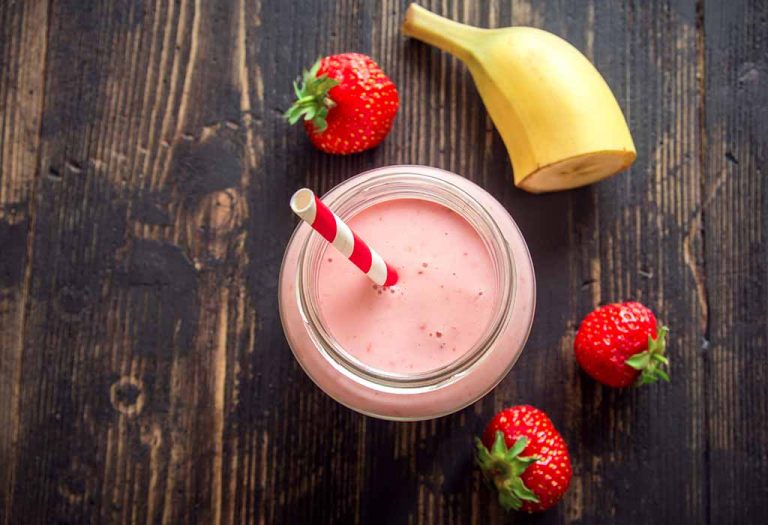How to Make Spinach-Pumpkin Puree (Recipe) for Babies & Toddlers
Including spinach and pumpkin in your baby’s diet in the form of a baby puree can be a great idea if he has recently started on solids. Both spinach and pumpkin are very nutritious and can contribute to your baby’s overall growth and development. So if you’re in search of a new recipe for your baby, we suggest that you make spinach pumpkin puree for him. This delicious recipe can provide calcium, Vitamin C, iron, and other essential nutrients to your baby. We bring you a recipe of spinach-pumpkin puree that you can try. Trust us, you can make this yummy spinach puree for your baby in no time!
How to Make Spinach Pumpkin Puree
This spinach pumpkin puree is a nutritious and vibrant baby puree recipe, perfect for introducing your little one to wholesome vegetables. Combining the earthy flavors of spinach with the natural sweetness of pumpkin, this smooth and creamy dish is packed with essential vitamins and minerals to support your baby’s growth and development.
Cooking Time
| Type | Time (hh:mm:ss) |
| Preparation Time | 00:05:00 |
| Cook Time | 00:15:00 |
| Total Time | 00:20:00 |
Cooking Method
Gas or steamer
Type of Meal
Vegetarian
Suitable For
Babies aged 6 months and above
Meal Schedule
Mid-morning snack, lunch or evening snack
Recipe Type
Main dish
Ingredients
| Type | Quantity |
| Fresh spinach leaves | Handful |
| Pumpkin | One slice or diced (one cup) |
| Salt | According to the taste |
| Cinnamon (optional) | A pinch |
Instructions
Here are step-by-step directions to make spinach-pumpkin puree for babies.
- Remove stems of spinach and soak it in cold water for two minutes. Meanwhile, peel the pumpkin and cut it into small cubes.
- Rinse both the veggies under running water thoroughly.
- Boil the pumpkin into a medium-sized saucepan for about 15 minutes.
- Boil the spinach leaves for 2-3 minutes in another saucepan.
- Rinse both the boiled vegetables under cold water for 2-3 minutes to stop the cooking process.
- Puree the spinach and pumpkin using a food processor or blender until you get a smooth texture.
- Add water to attain the desired consistency.
- Add salt according to the taste and mix it well.
- Serve it to your baby.
- You can also add a pinch of cinnamon powder while serving to enhance the taste of the spinach pumpkin puree.
Recipe Tips
Follow the tips given below to make sure that you make a delicious spinach-pumpkin puree.
- Cook both the vegetables properly otherwise the puree will not taste good.
- You can also bake the pumpkin cubes in a microwave. This will add smokey aroma to the puree.
- To make this homemade spinach-pumpkin puree baby food recipe creamier in texture, you can replace water with baby milk while blending.
- You can combine more vegetables in this recipe like carrot, zucchini, green beans, and sweet potato if your baby likes them.
Nutritional Information (Serving Per 100 Gram)
| Type | Value |
| Vitamin A | 213 mg |
| Vitamin C | 11.5 mg |
| Folate | 19.45 mcg |
| Potassium | 222 mg |
| Phosphorus | 112.5 mg |
| Magnesium | 12.05 mg |
| Calcium | 39.5 mg |
| Sodium | 10.5 mg |
| Iron | 1.5 mg |
| Selenium | 30 mg |
| Niacin | 2.1 mg |
Health Benefits
Since you have now learned how to make a spinach-pumpkin puree, its time to know about the health benefits of the two main ingredients that are a part of this delicious puree.
Health Benefits of Spinach
- Spinach is loaded with nutrients and antioxidants and it is considered very healthy. Including it in your toddler’s diet can lower the risk of liver infections in future.
- Spinach fights with the parasitic worm attacking the baby and make their digestive track healthy.
- Spinach is a great source of vitamin and calcium, hence it can help strengthen the bones.
- Spinach increases the tolerance level of the body and keeps them safe from many different health-related problems.
- As spinach is high in fibre, it can help in smooth bowel movement.
Health Benefits of Pumpkins
- Pumpkins are a rich source of essential vitamins and minerals that can help in the overall development of babies.
- Calcium and magnesium present in pumpkins can help in building stronger bones.
- The phosphorous content in pumpkins can help in better brain functioning of a child.
- It supports digestion and helps in regulating the bowel movement of a baby.
- Beta-carotene present in pumpkin enhances the immune system of the baby and can protect the baby against cold and flu.
- Pumpkins can help a baby relax and sleep better.
Buying Guide
Here are some buying tips that you should keep in mind while picking up the vegetables for this recipe.
- Spinach should be always fresh. If you are using stored spinach, make sure you store it properly otherwise it will increase the nitrate level. Avoid using frozen spinach leaves.
- While purchasing spinach, make sure the leaves are dark green and blemish-free.
- Look for an unblemished and heavy pumpkin.
- If purchasing packed slices of pumpkin, go for the box that has the deep orange colour of pumpkin and it should not be more than 7 days old.
- Always buy organic vegetables for your kids if possible.
FAQs
1. Can I freeze spinach pumpkin puree for later use?
Yes, you can freeze spinach pumpkin puree for later use. Simply portion the puree into ice cube trays or small airtight containers and freeze them. When you’re ready to serve, thaw the desired amount in the refrigerator or warm it gently on the stove. Frozen purees can typically be stored for up to three months without losing their nutritional value.
2. Can I add spices to the spinach pumpkin puree for my baby?
Yes, you can introduce mild spices to the spinach pumpkin puree as your baby gets older and is more accustomed to solid foods. Gentle spices like a pinch of cinnamon, nutmeg, or turmeric can enhance the flavor without being too overwhelming. However, it’s best to introduce new spices gradually and watch for any signs of sensitivity or allergies.
Now you know how to make spinach pumpkin puree and its health benefits. So go ahead and make this delicious puree for your baby and watch him eat it without throwing a fit!
References/Resources:
1. 7 Reasons You Should Eat More Spinach; Cleveland Clinic; https://health.clevelandclinic.org/benefits-of-spinach
2. Spinach, raw; Food Data Central; U.S. Department of Agriculture; https://fdc.nal.usda.gov/fdc-app.html#/food-details/1103136/nutrients
3. Pumpkin, raw; Food Data Central; U.S. Department of Agriculture; https://fdc.nal.usda.gov/fdc-app.html#/food-details/168448/nutrients
4. Pumpkin: Loaded with scary-good nutrients; Mayo Clinic Health System; https://www.mayoclinichealthsystem.org/hometown-health/speaking-of-health/pumpkin-loaded-with-scary-good-nutrients
5. When Can My Baby Start Eating Solid Foods?; Nemours KidsHealth; https://kidshealth.org/en/parents/solid-foods.html
6. Spinach; Center for Nutrition, Diet and Health; University of the District of Columbia; https://files.udc.edu/docs/causes/online/Spinach%2014.pdf
7. Batool. M, Ranjha. M. M. A. N, Roobab. U, Manzoor. M. F, et al.; Nutritional Value, Phytochemical Potential, and Therapeutic Benefits of Pumpkin (Cucurbita sp.) (Plants); National Library of Medicine; https://www.ncbi.nlm.nih.gov/pmc/articles/PMC9182978/; May 2022
Also Read:
Palak Soup Recipe
Ragi Turdal Puree Recipe
Baked Pumpkin Soup Recipe
Rice and Carrot Porridge Recipe
Was This Article Helpful?
Parenting is a huge responsibility, for you as a caregiver, but also for us as a parenting content platform. We understand that and take our responsibility of creating credible content seriously. FirstCry Parenting articles are written and published only after extensive research using factually sound references to deliver quality content that is accurate, validated by experts, and completely reliable. To understand how we go about creating content that is credible, read our editorial policy here.





